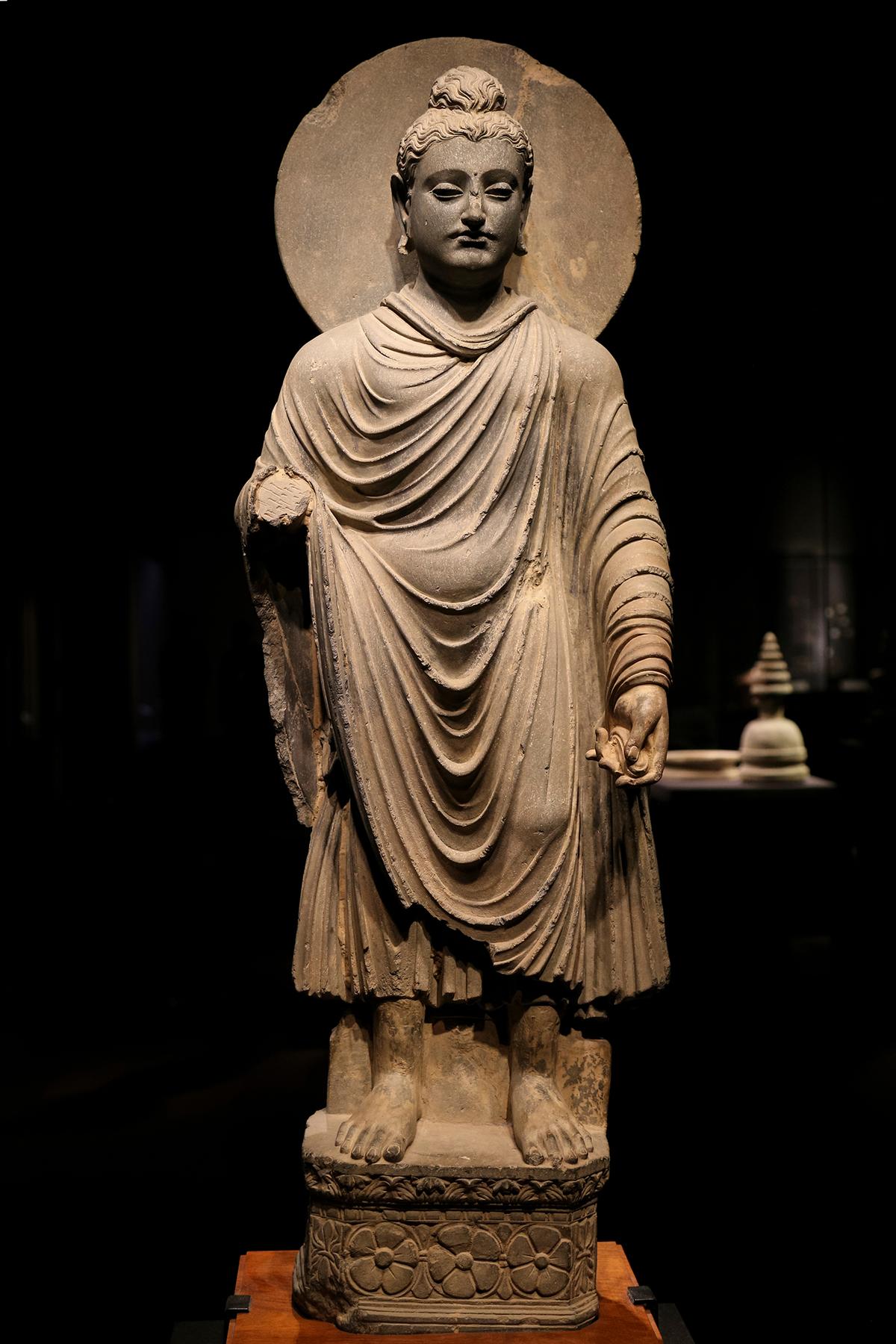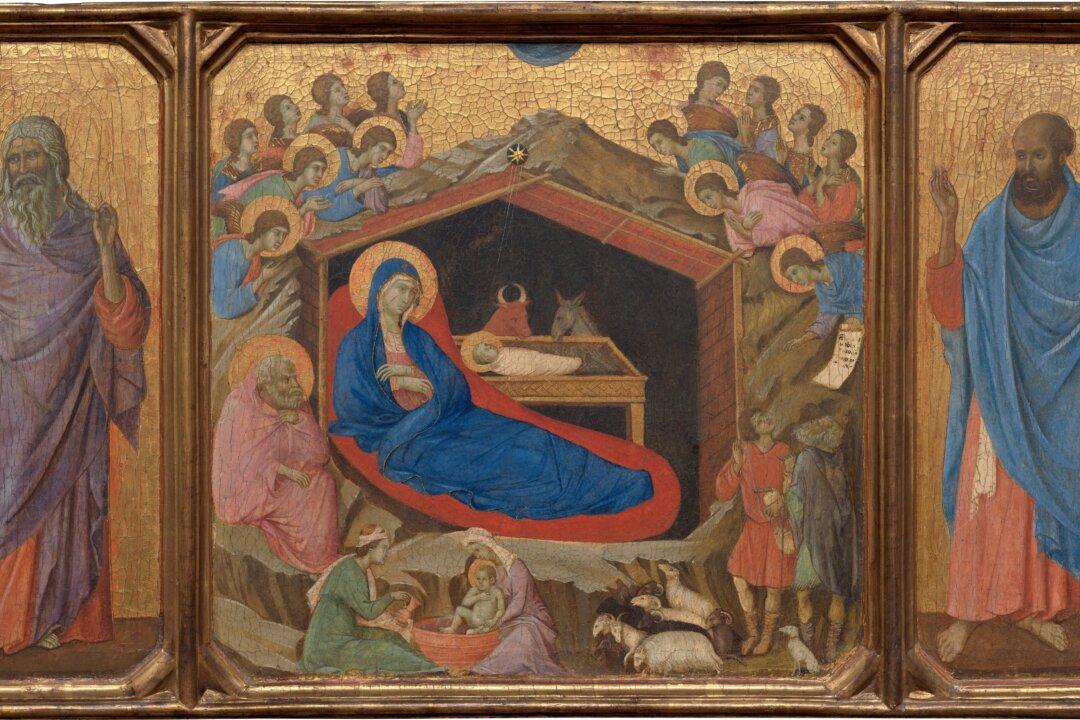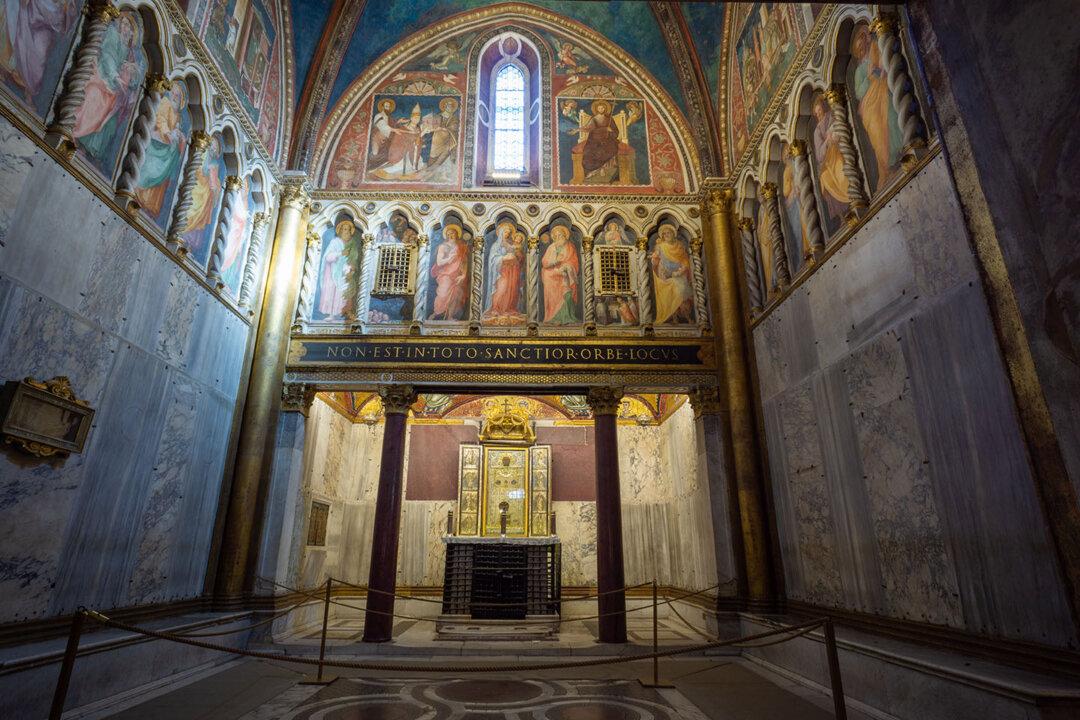When the ancient devotees of the Buddha Shakyamuni first represented “the enlightened one” in visual form, it was to Greek art that they turned, brought by Alexander the Great to the northwestern corner of the Indian subcontinent. In the region known as Gandhara, a flourishing Buddhist culture, they adopted the naturalism of Greek sculpture but endowed the figure with a divine pathos that Greece had never seen before.

One of the first representations of the Buddha during the Kushan empire (A.D. 30–375) in the historical region of Gandhara, Pakistan. Gumpanat/Shutterstock





